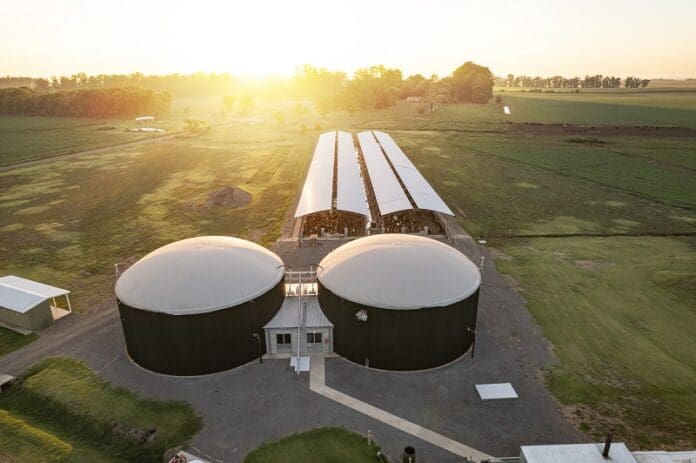Scania Argentina has completed the conversion of two generator engine sets to be powered by biogas for Estancia San Lino.
Located in Chivilcoy, Buenos Aires Province, Argentina, the first two Scania biogas engines will be used for the San Lino Agropecuaria SA agricultural and livestock enterprise. The biogas, also known as renewable natural gas (RNG), will be produced from animal manure and then processed through anaerobic digesters. At the end of the process, the biogas is transformed into electricity through generator sets with Scania engines from the company’s Green Efficiency line.
In turn, the biodigester waste returns to the earth as natural fertilizers. “Those are the same elements that the plant uses to grow, instead of buying fossil fertilizers. That is the concept of circular economy,” said Jaime Goodall of San Lino Agropecuaria SA.
According to Leandro Hernández, director of services at Scania Argentina, the engines for this purpose can be 9, 13, or 15 liters. “They are of the otto cycle type, they work with natural gas at 1500 rpm, generating 50 hertz,” said Hernández. “They are assembled with national Powgen brand generator sets and the service is carried out directly by Scania, which has 28 service points in the country prepared to attend to this type of technology.”
The San Lino project is designed to obtain 250 m3 per hour, which is transformed by the motor generator into 300 kWh of electrical energy. It is then expanded to 500 kW, which is what the plant can feed constantly, generating injections to the network 24 hours a day, explained plant builders from BGA Energia.
“The generation from biogas ranges between 160 and 200 MWh, this is 40% cheaper than the generation of electricity based on gas oil,” said Martín Pinos, managing partner of BGA Energia. “This opens the possibility that, in addition to having an environmental benefit from effluent treatment, the cost of electricity generation in rural areas can be reduced.”
Scania said that these processes and the biogas generator can reduce carbon dioxide emissions by 90%. “If we take all the generator sets that are working in the country in continuous generation and deliver energy to the grid in thermal power plants, and we convert them so that they are fed with biogas of animal origin or from other effluents, the carbon footprint could be reduced at the country level,” said Hernández.
Scania said that it is noticing a strong trend toward more sustainable engine solutions, with 15% of its engine sales centered around natural gas. In five years, the company forecasts that biogas engines will make up 15% of engine sales, giving natural gas a 30% share of total engine sales.

















